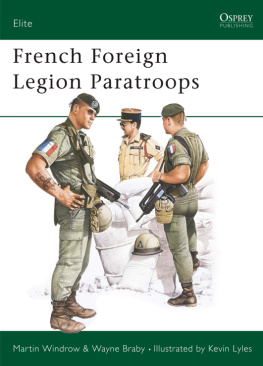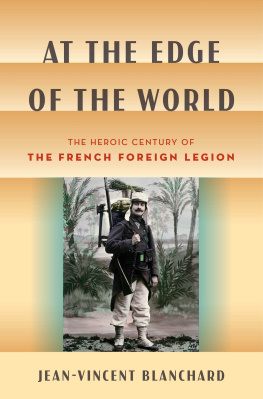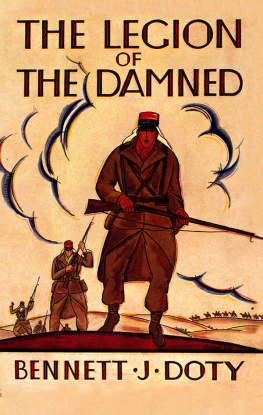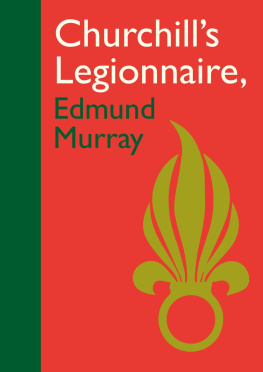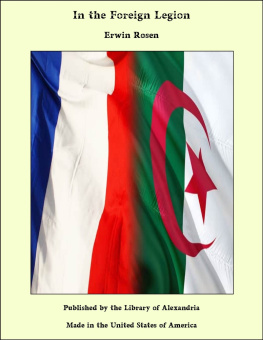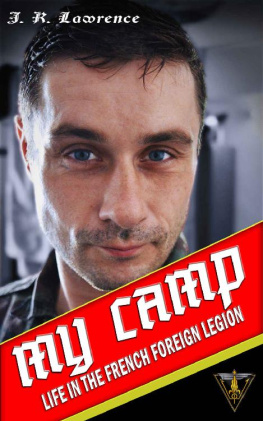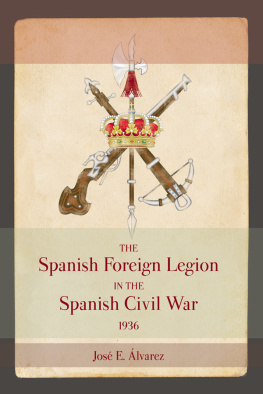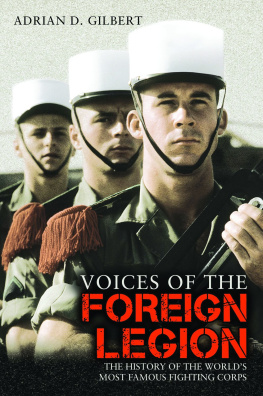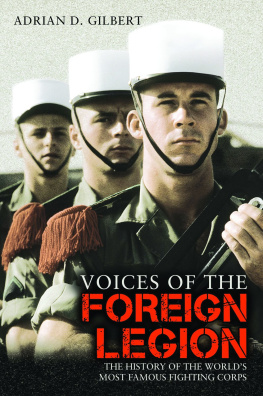Braby W. - French Foreign Legion Paratroops
Here you can read online Braby W. - French Foreign Legion Paratroops full text of the book (entire story) in english for free. Download pdf and epub, get meaning, cover and reviews about this ebook. City: London;Djibouti, year: 1985, publisher: Osprey Publishing, genre: Non-fiction. Description of the work, (preface) as well as reviews are available. Best literature library LitArk.com created for fans of good reading and offers a wide selection of genres:
Romance novel
Science fiction
Adventure
Detective
Science
History
Home and family
Prose
Art
Politics
Computer
Non-fiction
Religion
Business
Children
Humor
Choose a favorite category and find really read worthwhile books. Enjoy immersion in the world of imagination, feel the emotions of the characters or learn something new for yourself, make an fascinating discovery.
- Book:French Foreign Legion Paratroops
- Author:
- Publisher:Osprey Publishing
- Genre:
- Year:1985
- City:London;Djibouti
- Rating:3 / 5
- Favourites:Add to favourites
- Your mark:
- 60
- 1
- 2
- 3
- 4
- 5
French Foreign Legion Paratroops: summary, description and annotation
We offer to read an annotation, description, summary or preface (depends on what the author of the book "French Foreign Legion Paratroops" wrote himself). If you haven't found the necessary information about the book — write in the comments, we will try to find it.
French Foreign Legion Paratroops — read online for free the complete book (whole text) full work
Below is the text of the book, divided by pages. System saving the place of the last page read, allows you to conveniently read the book "French Foreign Legion Paratroops" online for free, without having to search again every time where you left off. Put a bookmark, and you can go to the page where you finished reading at any time.
Font size:
Interval:
Bookmark:
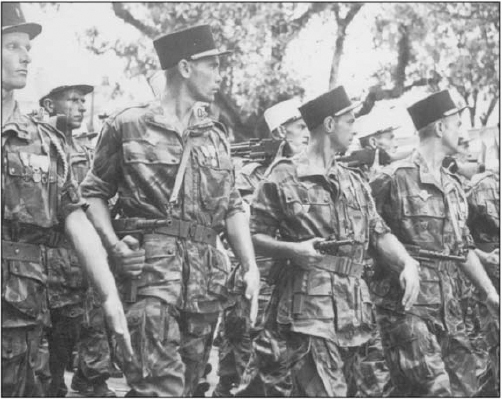
The garrisons of French Indochina (today Vietnam, Laos and Cambodia) spent much of the Second World War in enforced idleness, supervised by Japanese forces whose presence had been sanctioned by the Vichy government in October 1940. In March 1945 the Japanese turned without warning on the scattered and ill-equipped French garrisons: those who resisted were massacred with characteristic savagery. A heroic column, whose major element was drawn from the Foreign Legions 5th Infantry Regiment (5eREI) fought its way north into Nationalist China, where it was interned. It was men of the 5eREI who became the first lgionnaire-paras of all when, at Kun Ming USAAF base, Lt. Chenels platoon began jump training shortly before Japans surrender.
The power vacuum in Indochina was skilfully exploited by a Vietnamese nationalist organisation dominated by the Communist leadership of Ho Chi Minh and his military subordinate Vo Nguyen Giap. It was February 1946 before war-torn France was able to send troops to Hanoi. By that time Ho had used the respite offered by a sketchy inter-Allied occupation to turn his Viet Minh into a well-armed nationwide guerrilla organisation, and to declare an independent republic. The talks which followed were doomed from the start. The Viet Minh had no intention of accepting the reimposition of French colonial rule; and the French, still smarting from the traumas of the Second World War, were in no mood for compromise. Negotiations broke down, accompanied by violent episodes which left each side with a legacy of hatred.
In December 1946 the Viet Minh took to the hills; and early French attempts to destroy their refuges among the wooded cliffs of Tonkin, north of the French centres of Hanoi and Haiphong in the Red River Delta, met with failure. Ho and Giap activated their organisation throughout the peninsula; and over the next eight years they tied down, and eventually defeated, the French Union forces in the worlds first text-book demonstration of Maoist revolutionary warfare.
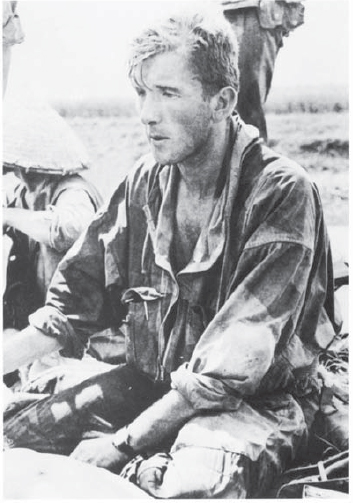
Patrice de Carfort,mdecin-lieutenantof the 1erBEP during 1953. He wears a British 1942 windproof smock and trousers, the former with a front zip fastener added.
The war was fought, on the one side, by a Viet Minh army which by early 1951 could field 100,000 to 120,000 regular soldiers grouped in one artillery and five infantry divisions of conventional size and organisation, and in a number of independent regimental groups. This regular Chuc Luc was backed by a strong regional militia of perhaps twice that strength; and enjoyed the active or passive support of a significant part of the population. While Frances fighting men had the healthiest respect for the Viets, her high command persisted for some years in regarding them as mere colonial bandits. Even though the revelation of Giaps conventional strength in autumn 1950 opened French eyes, a fatal degree of underestimation of the enemys abilities was still to have dire effects as late as 1954.
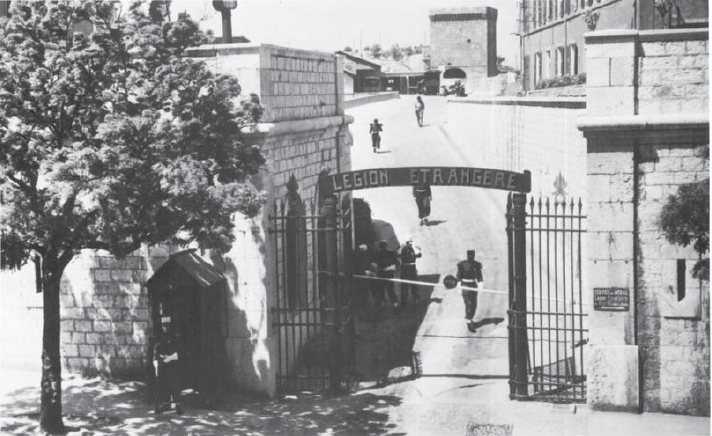
The gates of Bas-Fort St Nicolas in Marseillesthe first step towards the hills and paddy fields of Indochina for tens of thousands of men with nothing to lose in the years 194554.
On the other side was an Expeditionary Corps whose strength varied between about 115,000 and 185,000 men. Of this total, only some 50,000 were French. Legally, French conscripts could not be sent to Indochina; thousands of Frenchmen served as cadres with African and Asian units, but the only formed, all-French units available were volunteer Colonial regiments, and specialist units of regular career soldiers such as airborne and armoured regiments. North and West African colonies provided some 25,000 men, mainly infantry. At various times between 50,000 and 90,000 locally recruited Vietnamese and montagnards provided the largest single element. They were generally lightly equipped, and most of them were tied down in static defensive posts along the highways and waterways and in the wild interior. From 1950 onwards an intense effort was made to form a serious Vietnamese National Army, with variable results. Finally, some 20,000 men at any one time were provided by the French Foreign Legion. In the chaotic aftermath of world war, it was not surprising that the Legion was swollen to an unprecedented strength of around 30,000 by the lost ex-soldiers and refugees of 50 nations. (The German element was strong, but has been exaggerated by some journalists.)
The general nature of the war should be sketched in, however briefly. The Viet Minh enjoyed priceless advantages from the start; and the French suffered under severe handicaps.
The key element, as in all revolutionary wars, was the support enjoyed by the VM among the population. Giap received a constant flow of information about French movements, and could orchestrate the activity of his regular and militia units to take advantage of them. The use of inappropriate, conventional-warfare methods against an elusive enemy hardened this popular hostility towards the French: there is no quicker way of turning a neutral bystander into an active opponent than by bombing his village or destroying his crops.
The terrain was perfect for all kinds of irregular operation. A virtually unexplored hinterland of thickly jungled mountains was surrounded by swampy plains, and traversed by only a few narrow and winding roads. The Viet Minh nearly always had the initiative, and the interior lines. They could achieve massive local superiority for widely separated attacks on lonely posts; and could ambush the French reaction forcestied as they were to a few, predictable roadsbefore fading back into the wilderness.
During 194649 the VM fought a limited war of guerrilla pinpricks, inflicting a steady drain on French manpower while building up their own conventional forces. From the outset, the French truly controlled only the immediate vicinity of their main towns and routes; and after dark there was no such thing as a safe road in the whole country.
Giap unveiled the potential of his regular divisions in the autumn of 1950, when he captured a large area of north-eastern Tonkin along the Chinese border in the campaign generally known as the battle of RC 4. Thereafter he enjoyed the major advantage of active sanctuary inside China, which had fallen to his Communist sponsors in 1949. With training camps, supply dumps and rest areas safe on the other side of a mountainous jungle frontier, and with an increasing flow of the most modern materiel, he was able to pursue ever more ambitious campaigns of movement. Once, the French had prayed that the Viet Minh would come down from the hills so that they could be destroyed by artillery, tanks and aircraft. But in the event, Frances always-inadequate tactical airpower did not prove decisive: the VM were masters of camouflage and of concealed movementeven by major formations, huge columns of supply coolies, and strong artillery assets. French armour and artillery were limited to the roads and the few areas of good going; and while they did achieve some notable victories, the French high command never had sufficient mobile reserves to exploit victory decisively. Airborne units were employed effectively as quick reaction forces; but as they were often sent into action to retrieve losing battles, they inevitably suffered very high casualties. Inadequate airlift capacity was a constant problem: at the beginning of 1949 there were only 45 old Junkers Ju52 trimotor transports available, and even at the end of the war in 1954 France had only some 80 C-47 Dakotas in-country.
Font size:
Interval:
Bookmark:
Similar books «French Foreign Legion Paratroops»
Look at similar books to French Foreign Legion Paratroops. We have selected literature similar in name and meaning in the hope of providing readers with more options to find new, interesting, not yet read works.
Discussion, reviews of the book French Foreign Legion Paratroops and just readers' own opinions. Leave your comments, write what you think about the work, its meaning or the main characters. Specify what exactly you liked and what you didn't like, and why you think so.

